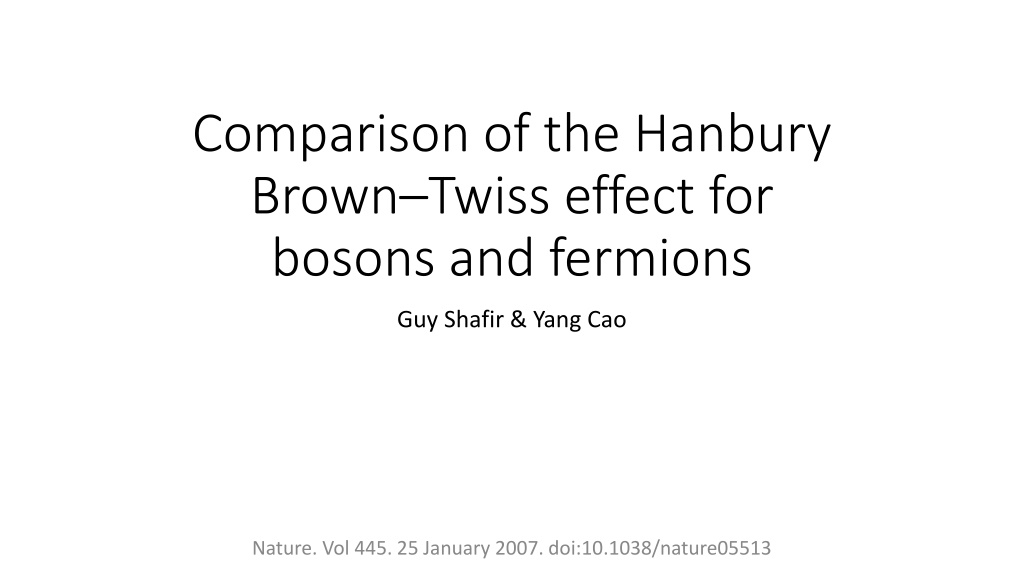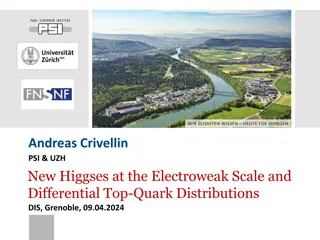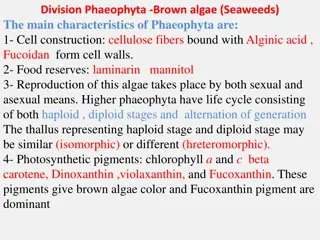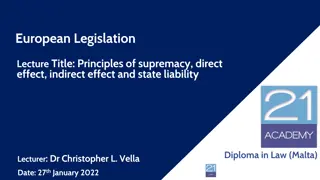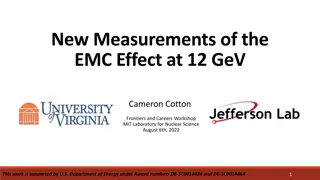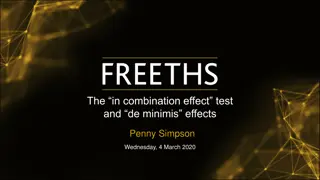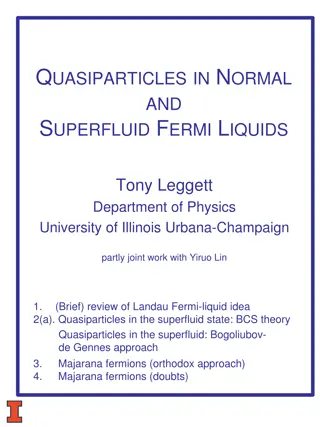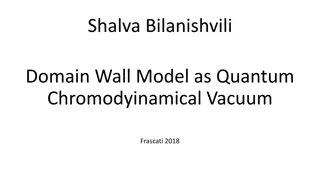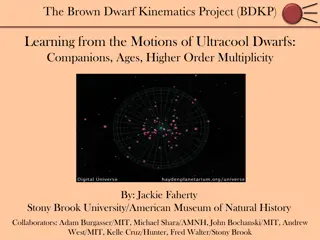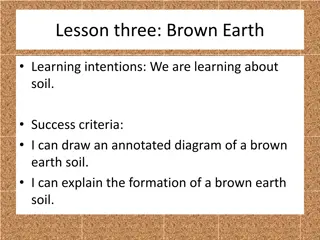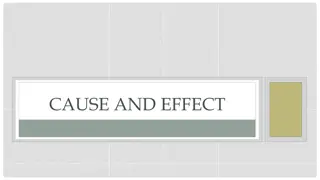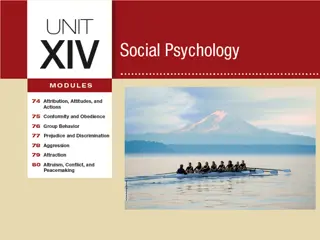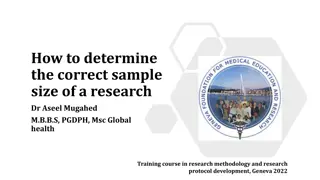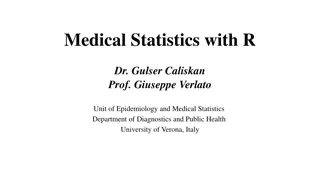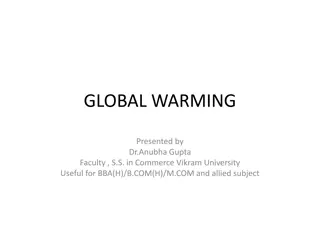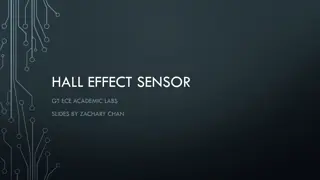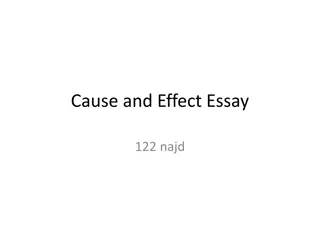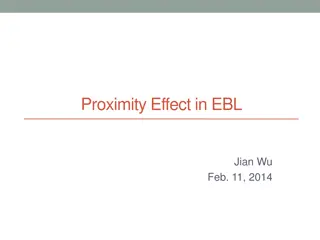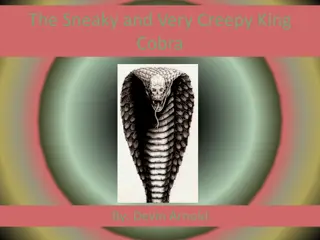Comparison of Hanbury Brown Twiss Effect for Bosons and Fermions
This study compares the Hanbury Brown Twiss (HB&T) effect for bosons and fermions, showcasing how different correlation functions apply to these particles in quantum systems. The analysis delves into the mathematical structures and order correlations for both bosons and fermions, illustrating the phenomenon of bunching and anti-bunching. Additionally, it discusses correlation lengths for photons and particles, along with measuring the HB&T effect in a particle beam using ultra-cold helium atoms.
Download Presentation

Please find below an Image/Link to download the presentation.
The content on the website is provided AS IS for your information and personal use only. It may not be sold, licensed, or shared on other websites without obtaining consent from the author. Download presentation by click this link. If you encounter any issues during the download, it is possible that the publisher has removed the file from their server.
E N D
Presentation Transcript
Comparison of the Hanbury Brown Twiss effect for bosons and fermions Guy Shafir & Yang Cao Nature. Vol 445. 25 January 2007. doi:10.1038/nature05513
Hanbury BrownTwiss effect Measure the correlation function of two photoionizations, HB&T is interference between two processes. Structure of j i ( )( ) 2 , , A , : g r t r t A B B = For A=B: 2 2 + = 4 2 2 + 4 For A B: 2 2 2 2 + = + = 2 For two far detectors:
2nd order correlation - Bosons ( ) ( ) ( ) ( a r t ) = (2) , , , , G a r t a r t a r t 1 1 1 1 2 2 2 2 Applying Wick s theorem: ( ) ( ) ( ) ( a r t ) ( ) ( ) ( ) ( a r t ) = + (2) , , , , , , , , G a r t a r t a r t a r t a r t a r t 1 1 1 1 2 2 2 2 1 1 2 2 2 2 1 1 2 ( ) ( ) ( )( ) 1 = + , , , , , r t r t r t G t t 1 1 2 2 1 1 2 2 Where the normal algebra of annihilation and creation operators where used: = = = [ , a a ] ; [ , ] 0 ; [ , ] 0 a a a a i j ij i j i j
2nd order correlation - Fermions Applying the anti-commutator relations for fermions = = = { , a a } ; { , } 0 ; { , } 0 a a a a i j ij i j i j We get: ( ) ( ) ( ) ( a r t ) ( ) ( ) ( ) ( a r t ) = (2) , , , , , , , , G a r t a r t a r t a r t a r t a r t 1 1 1 1 2 2 2 2 1 1 2 2 2 2 1 1 2 ( ) ( ) ( )( ) 1 = , , , , , r t r t r t G t t 1 1 2 2 1 1 2 2
Bunching and anti-bunching Take the limit: we get 2 t (1) 0 , t r r ( , ,0) r r 1 g 1 1 2 1 1 (2) 2 g - Bunching of Bosons: (2) 0 g - Anti-bunching of fermions:
Correlation lengths L Photons: L is the distance between source and detector s is the source size is the wavelength = l 2 s Particles: replace the wavelength with De-Broglie wavelength: ms t = l
Measuring HB&T for a particle beam (1) A cloud of ultra-cold metastable helium atoms is released at the switch-off of a magnetic trap. The cloud expands and falls under the effect of gravity onto a time-resolved and position- sensitive detector (microchannel plate and delay- line anode) that detects single atoms. 3He: Fermions 4He: Bosons y x
Measuring HB&T for a particle beam (2) The chosen states of both isotopes had nearly the same magnetic moments. Allowed to achieve the same spot size and the same temperature The atoms are free-falling at the time of the trap turn-off, generating identical flight time to the detector. Interaction between particles on the same ensemble is negligible.
Main result 4He 3He
Correlation length t = l ms Falling time and spot size are the same for both atoms. Expected ratio in correlation length is mass ratio: 1.3333 Measured correlation length ratio: 1.3 0.2 Correlation length is also in good agreement with the formula above.
Contrast Theoretical contrast is 100% (0 for fermions, 2 for bosons) Measured contrast was very low ~1.03 for bosons ~0.94 for fermions Reason: finite resolution of the detector Difference between bosons and fermions are claimed from two reasons: Finite time of the magnetic field shutdown which may influence bosons different than fermions Systematic errors in the estimate of the resolution function
Effect of temperature Higher temperature increases the source size, Therefor reducing the correlation length and the contrast:
Summary The authors showed the Hanbury Brown and Twiss effect for both bosons and fermions with the two isotopes of Helium: Bunching effect was observed for bosons Anti-bunching effect was observed for fermions. Careful steps were taken during the experiment to achieve almost identical conditions for the two isotopes, enabling to understand the effect as a purely quantum effect associated with the exchange symmetries of the wave-functions of indistinguishable particles.
